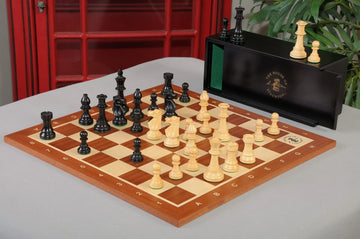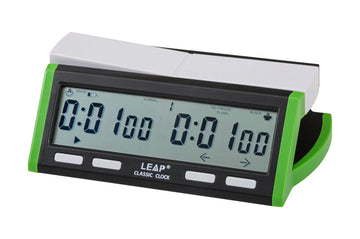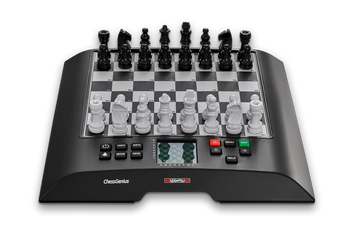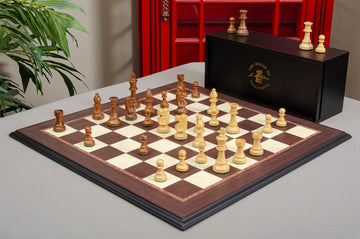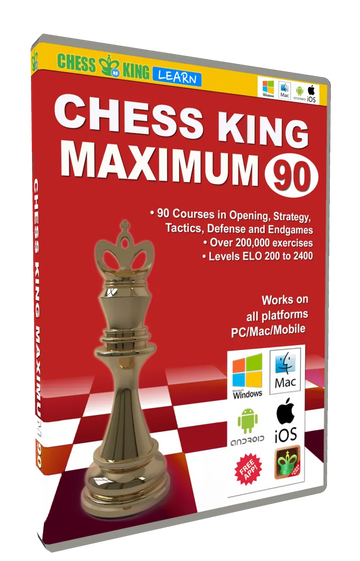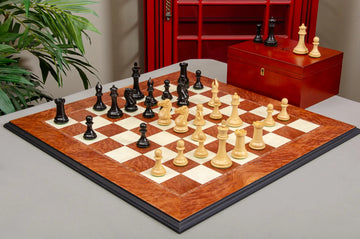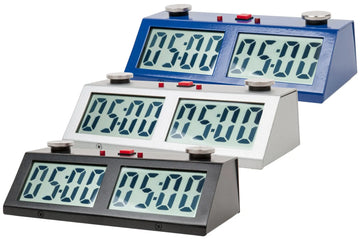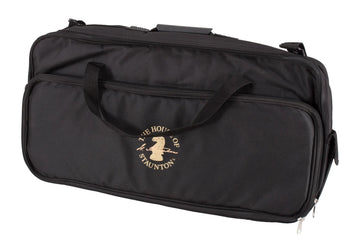Chess Clocks: A Comprehensive Guide
A staple of chess tournaments, a way to keep your friendly games from lasting four hours, and an essential companion to every serious player. Introducing chess clocks.
Some form of time control is integral to modern chess. In over-the-board games, chess clocks are used to manage time in chess. All official chess tournaments use them and understanding how they work, the various types, and related rules is an important part of playing in a tournament.
Even if you only play casual games at home or a local club, chess clocks add a new element to the game that can make it more interesting and intense.
In this article, we will explore the history of chess clocks, how to use them, tournament regulations surrounding them, and what to consider when buying one.

A Very Brief History of Chess Clocks
Before chess clocks became common, chess games could go on for a very long time. Often they would last over eight hours. In the mid-19th century, hourglasses were sometimes used to limit each player’s time. Naturally, this was not the most accurate or convenient solution.
In 1883, members of the Manchester Chess Club introduced a chess clock that resembles the analog version we see today. That is, two connected clocks running one at a time with a button on each side to stop your clock and start your opponent’s.
Since then, chess clocks have stuck with this fundamental idea. The only major difference is that they are mostly digital. They also come with additional features, allowing for more complex time controls including increments.
Today, chess clocks are an integral part of the game and a prize possession for chess players.
How to Use a Chess Clock
Chess clocks are easy to use, but if you’ve never seen one before they can be momentarily confusing.
Each clock is set to a specific amount of time – say 3 minutes. Black will press the clock first, which will start White's clock, allowing them to make their first move. This starts the opponent’s clock; their 3 minutes begin. Once they have made their move, they will press their button stopping their clock and starting their opponents, and so on.
You can set the time control by winding a dial on analog clocks or using buttons on a digital clock. Analog clocks traditionally also raise a small red flag when time expires. This is the origin of the term “flagging,” meaning to run out of time.
Digital clocks will sometimes have presets for the most common time controls and increments. So, if you want to play a Blitz game, you can simply select the preset time control.
Practically, that is how to use a chess clock. There are different types, specific settings, and tournament rules that can make it a bit more complicated, but overall the chess clocks haven't changed their design much because it is simple and effective.

Tournament Rules on Chess Clocks
When using a chess clock in a tournament, it is important to know the various rules and regulations for that specific event. Here are some examples of chess clock rules from FIDE, chess's international governing body.
- Use the same hand to move a chess piece and press the clock
While this may seem arbitrary, it is an important rule that prevents unfair time advantages. These can especially occur when one or both players are very low on time and accidents with pressing the buttons are more common. It also prevents players from hovering their hand over the button, which is not allowed.
- The player with the black pieces must start White's time to begin the game
As we've seen, chess clocks work with a button that stops your time and starts your opponent's. As such, to start the game, the player who moves second must start the clock.
- Players must monitor their own time
This may seem obvious, but it is important to remember that you are responsible for keeping track of your own time during a chess match.
- Offer a draw before pressing your clock
You must only offer a draw after you have made your move, but before you have pressed the clock, starting your opponent's time.
- If a player makes an illegal move, their opponent is given an additional two minutes on their clock
The arbiter will pause the clocks, reset the position to what it was before the illegal move, and provide the additional time to the opponent. Multiple illegal moves can lead to losing the game by default. In lower time controls, where penalties like this are impractical, a single illegal move can also lead to a loss.
Related: Rules of Chess: 10 to Know Before Your Next Tournament
Which Clock Is Right For You
The two main types of chess clocks are digital and analog. You can find everything from wooden antiques and collapsable travel versions to tournament-ready clocks and modern metal designs.
Knowing which option is right for you is largely about preference, but there are a few key things to know to make sure you get the right one for you.
Tournament-Ready Chess Clocks
High-level chess tournaments will provide chess clocks, but for smaller club tournaments, players are often required to bring their own. If you are a club player or looking to get into tournaments, it is worth investing in a tournament-ready option.
These are digital chess designs with all the settings necessary for different time controls. This means they can be programmed for different increments and game types. Many digital clocks come with pre-sets for different time controls, which makes your life a bit easier.

Chess Clocks for the Home
For a chess clock to use at home, with friends, or at your local clubs, you can simply pick your favorite.
Digital clocks have large easy-to-use buttons and many of them have simple, attractive designs. The plastic versions are also durable and can withstand aggressive button pressing, which tends to happen when players are under time pressure.
For people who prefer an antique look, analog, wooden versions can be functional and a pleasant part of home decor.
Collectors Editions
Apart from being part of the kit for a seasoned player, chess clocks are collectible items. There are many antiques, unique designs, and historically significant pieces that can become more valuable over time.
Not all collectible chess clocks are analog either; some early or rare digital ones are valuable to the right collector.
Is It Worth Getting Your Own?
As we have seen, there are plenty of reasons to get a chess clock. If you are looking to be a tournament player, it is more or less essential. While many tournaments provide them, training over the board with a clock is important practice.
Even if you are a casual player or just get into the game, they are an enjoyable addition to over-the-board play. Different time controls can turn chess into a completely different game: think of a bullet game versus a full classical chess match.
Exploring these options at home or at your local club is another way to grow your knowledge of chess, become a well-rounded player, and enjoy yourself. Overall, I would recommend one to anyone who enjoys playing the game over the board.

